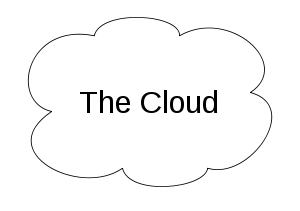 Image via Wikipedia
Image via WikipediaI cannot disagree more, and The Economist's Free Exchange presents, what I believe, is a clear rejection of Mr. Gladwell's theory here. As suggested by Free Exchange, "One mistake is to assume that social media merely increases weak ties...Networks like Twitter and Facebook reduce the cost of minor interactions, which leads to more minor interactions." Which leads to the ability to manage more strong ties. Furthermore, Mr. Gladwell fails to see that the internet's social network is much more like the Greensboro network than he could imagine. Free Exchange comments on the benefits, "Networks, on the other hand, are bottom-up enterprises. They're very difficult to shut-down or break." The same is true of this today as in the 1960s, when sit-ins were staged across the country.
 Image via CrunchBaseThe influence of social media cannot be underestimated, and it will continue to grow. The effectiveness can be proved. In the last month a lone, forums across the internet have spurred over $250,000 in donations to American classrooms and a Rally in Washington, DC. The genesis of which came from one man's post. The proof is simply in the pudding.
Image via CrunchBaseThe influence of social media cannot be underestimated, and it will continue to grow. The effectiveness can be proved. In the last month a lone, forums across the internet have spurred over $250,000 in donations to American classrooms and a Rally in Washington, DC. The genesis of which came from one man's post. The proof is simply in the pudding.Social media is now an avenue to spur action, and in the very near future companies and large organizations will be fully harnessing this power. Applications like Yammer and Jive are starting to create internal networks to share knowledge and gather it into action. But like Toby McGuire will tell you, with great power comes great responsibility. Over at Law.com, Ken Strutin explains the expanding liability of social media here. He notes that on Facebook, Linked In, MySpace, and Twitter:
The problem is that a defendant's postings are usually impulsive, the product of or encouraged by exchanges with friends, and produced under a vague notion of online privacy. Once the damage is done, a concerted effort to present a complete picture might be the best option to ameliorate its impact.This sort of personal liability will extend to the corporate world as well, especially as we see social media begin to overlap in both spheres. However, in the majority of today's corporations, there has been no concerted effort to understand what type of content leaks onto social media from their networks and employees.
The need here is to be able to archive these interactions, and ensure that employees understand what this means. Social media will exist in perpetuity on the internet, yet the company may not have access to this data if it is not archived. Should litigation hit, serious holes in the discovery process could occur, having legal teams face sanctions for negligence or worse. These are holes which, although not included in many cases now, have pointers on different servers and databases across the internet. It is not the simple case of just one missing file here or there, which in itself could be a huge problem.
Soon enough, as courts begin to better understand the impact of social media, so too will their enforcement of it as relevant and discoverable. Companies must be prepared.



